We remove the rear suspension rods in cases when it is necessary to remove the suspension or repair the rods themselves
Usually the rubber bushings on the rods wear out
Spare parts stores sell both complete rods and repair kits.
Of course, if the rods are heavily corroded or heavily deformed, it is better to replace them.
Removing the lower longitudinal rod
The longitudinal rods are removed to replace or repair worn rod hinges.
The upper rod is attached via rubber-metal hinges with its front end to the body side member, and its rear end to the bracket on the rear axle beam.
The lower rod is secured via rubber-metal hinges with the front end to the bracket on the body floor, the rear end to the bracket on the rear axle beam.
Disconnect the lower shock absorber mount from the rear axle beam.

Using a 19 mm open-end wrench, unscrew the nut of the rod mounting bolt to the rear axle beam, holding the bolt from turning with a wrench of the same size.
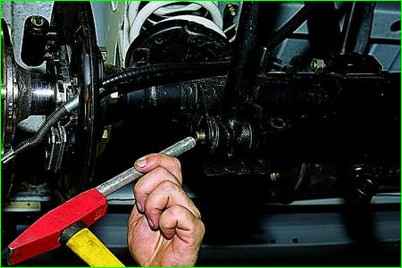
Using a punch made of soft metal, knock out the bolt and take it out.

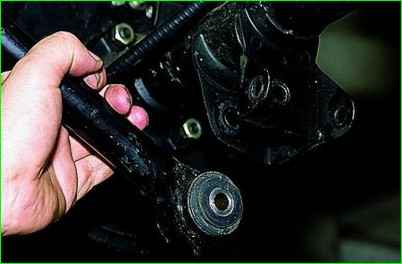
We remove the rear end of the rod from the eye of the rear axle bracket.

Using a 19 mm open-end wrench, unscrew the nut securing the rod to the body bracket, holding the bolt from turning with a wrench of the same size dimensions.

We take out the bolt and remove the rod.

To replace the rubber bushings of the rod, we clamp it with a little force in vice.
Using a puller, press the bushing into the cup resting on the edges of the eye, and remove the rubber and steel (spacer) bushings.
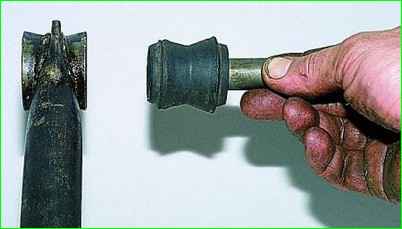

Lubricate the new rubber bushing with soapy water and press it into the eye in a vice.
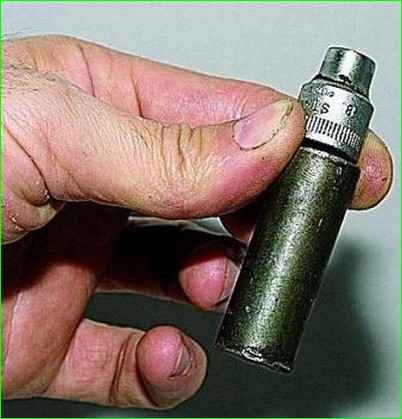
To press in the spacer bushing, use a conical mandrel or a tool head with different outer diameters.

Insert the mandrel into the hole in the rubber bushing lubricated with soapy water and press the spacer bushing in a vice.

To remove the bracket for fastening the front end of the rod, use a 17 mm head to unscrew the four nuts

Remove the bracket
Install the removed parts in the reverse order.
Removing the upper longitudinal rod
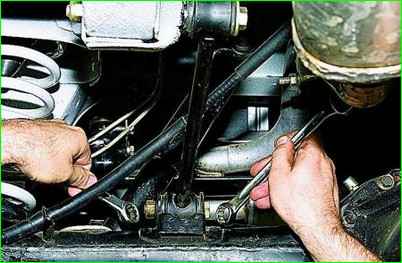
Using a 19 mm open-end wrench, loosen the nut securing the rod to the rear axle beam, holding the bolt from turning with a wrench of the same size.

Using a punch made of soft metal, knock out the bolt.
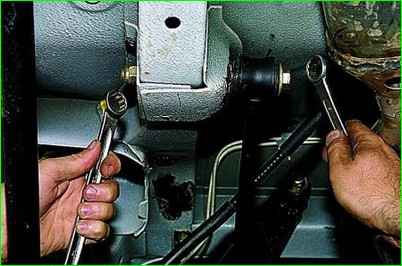
Using a 19 mm open-end wrench, unscrew the nut securing the rod to the the body side member, holding the bolt from turning with a wrench of the same size
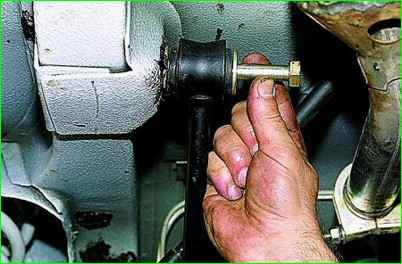
Removing the bolt
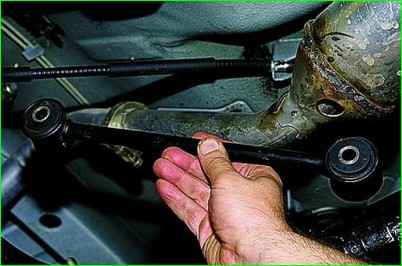
Removing rod
Change the rubber bushings as shown above
Install the rod in the reverse order.
Removing the cross rod
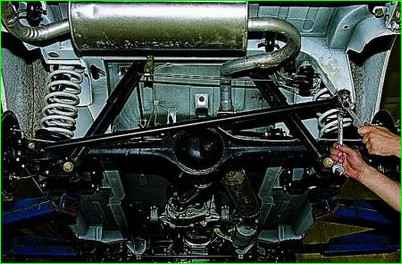
Using a 19 mm open-end wrench, loosen the nut securing the rod to the body bracket, holding the bolt from turning with a wrench of the same size.

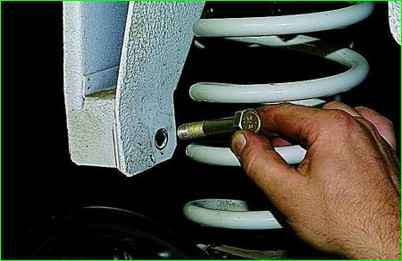
Using a punch made of soft metal, knock out the bolt and take it out.
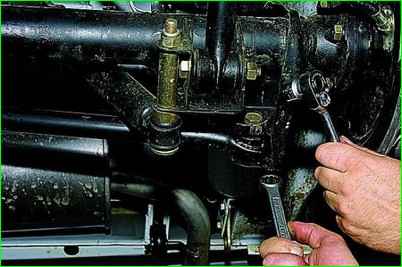
Using a 19 mm open-end wrench, loosen the nut securing the crossbar to the rear axle beam bracket, holding the bolt from turning with a head of the same size.
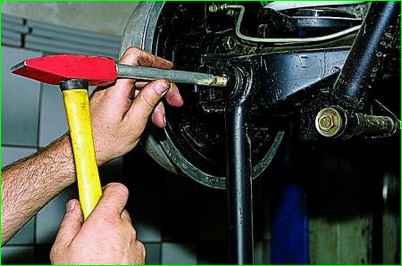
Using a punch made of soft metal, knock out the bolt and remove crossbar
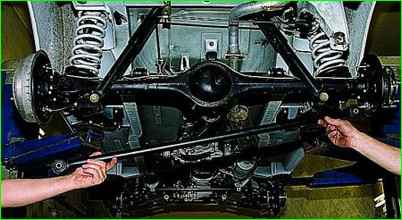
See the beginning of the article for replacing the crossbar rubber bushings.
Install the bar in the reverse order.
Finally tighten the nuts of the bar mounting bolts in the "car on wheels" position.
Tightening torque of the nuts of the crossbar and longitudinal bar mounting bolts 66.6-82.3 Nm (6.8-8.4 kgf m)





